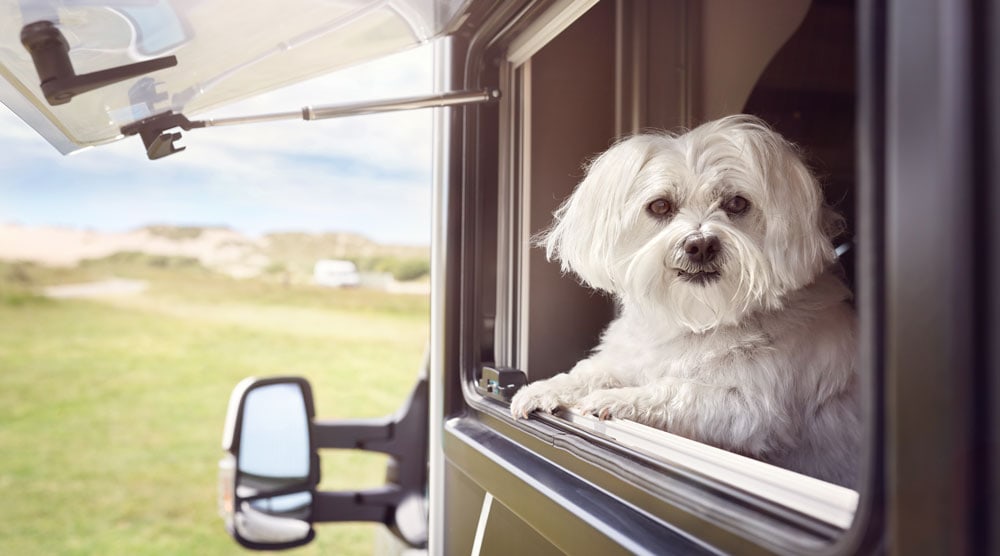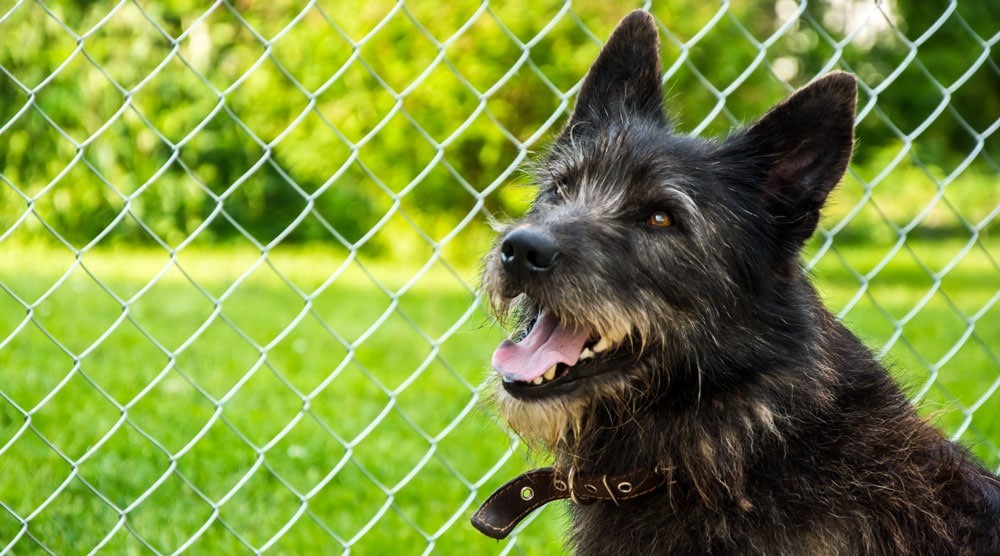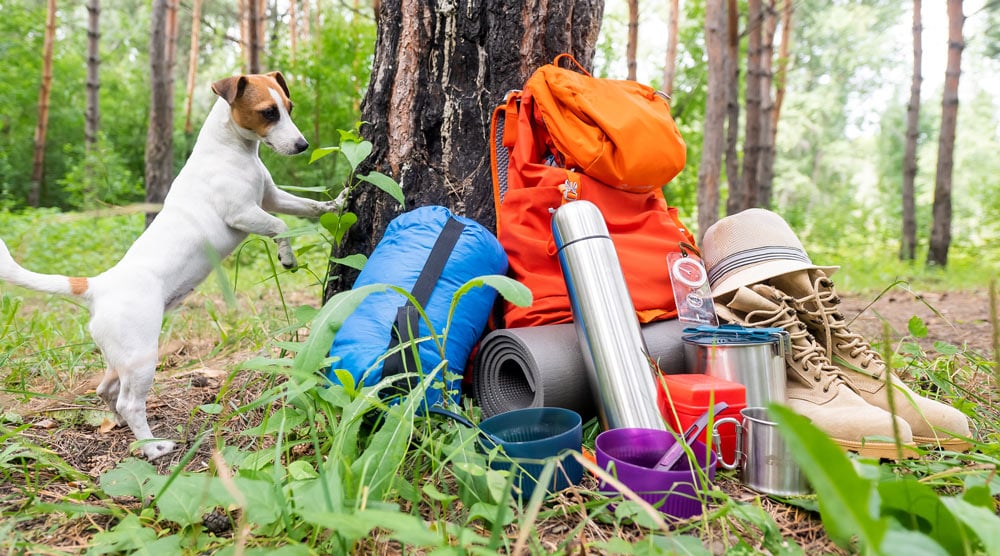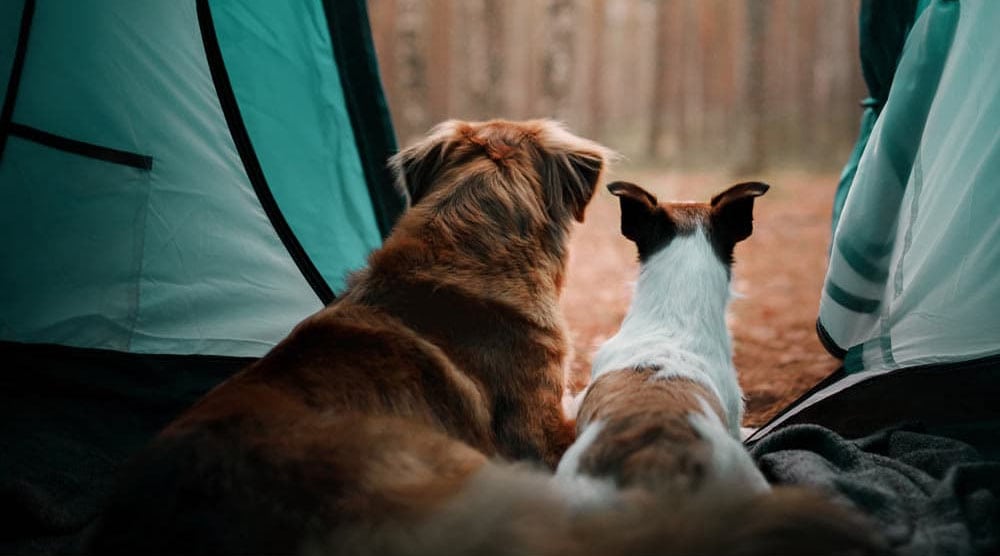Planning an RV trip with your dog? Here are 13 tips for keeping your dog safe and happy while RVing.
Contents
- Should You Take Your Dog RVing?
- How to Safely RV With Your Dog
- 1. Don’t Leave Your Dog Alone for Long Periods
- 2. Start With a Short Journey and Trip
- 3. Bring Contact Information for Local Emergency Vets
- 4. Prepare for Hot Weather
- 5. Make Sure ID Tags Have a Cell Phone Number
- 6. Prepare a Dog First Aid Kit
- 7. Bring Home Comforts
- 8. Practice Basic Training Cues
- 9. Make a Checklist of Necessary Gear
- 10. Secure Your Dog While Driving
- 11. Watch for Signs of Discomfort
- 12. Provide Plenty of Mental Stimulation and Exercise
- 13. Get a Vet Check-Up Before You Go
- Summary
In this article, we’ll go through some of the most common dangers when RVing. We’ll also discuss whether it’s really a good idea to bring your dog.
Should You Take Your Dog RVing?
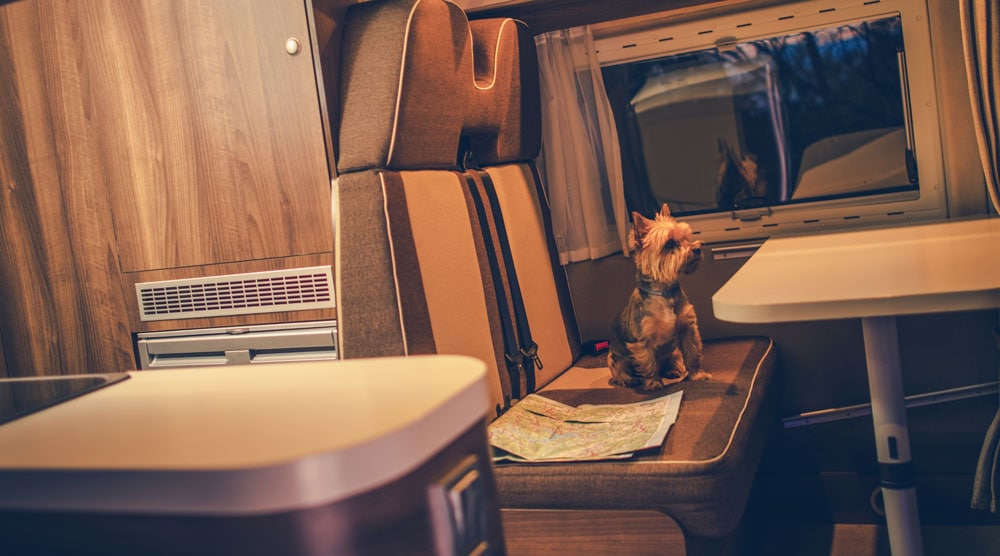
If you’re thinking about taking your dog RVing, it’s important to be honest about whether your dog would actually enjoy the trip.
Some questions to think about include:
- Does my dog get stressed or anxious when in new environments?
- Does my dog hate being in vehicles?
- Do I want to perform activities that are not suitable for my dog? Dogs shouldn’t be left alone in an RV – particularly in hot or cold weather.
- Is the weather likely to be too hot or cold for my dog?
- Does my dog have health issues that could be difficult to manage in an RV?
- Does my dog often bark at every small noise? There are many unfamiliar noises at an RV park – and constant barking is stressful for both your dog and other RVers.
- Is my dog reactive to people or other dogs?
- Does the RV park have restrictions on bringing dogs?
- Would I find it frustrating or limiting to plan the trip around my dog’s needs?
If you answered “yes” to any of these questions, then your dog would probably be happier staying with family or a trusted sitter.
Alternatively, if you’re not sure whether your dog would enjoy RVing, then plan a 1-2 night trip to test how your dog copes. Make sure you go somewhere nearby so it’s easy to come home if necessary.
How to Safely RV With Your Dog
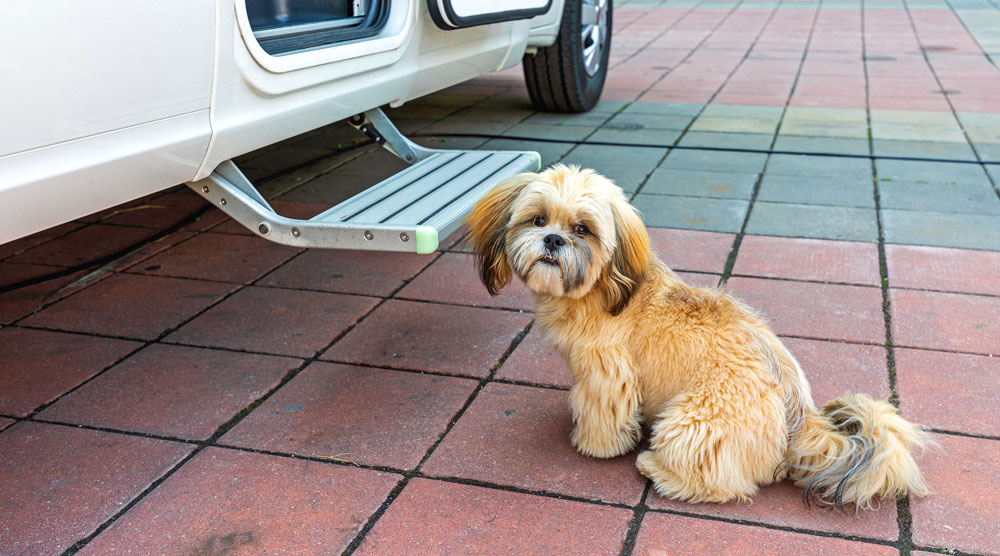
If you think your dog would enjoy RVing, then great! The next step is to plan a safe trip for you and your pet.
1. Don’t Leave Your Dog Alone for Long Periods
Dogs shouldn’t be left alone for long periods in an RV. There are many potential dangers, such as:
- The RV overheating or getting too cold
- Other faults with the vehicle
- Your dog eating toxic food or other products
- Someone breaking in
- Your dog breaking out
Instead, try to plan dog-friendly activities. Find dog-friendly restaurants, parks, and other places where your pup can join you.
2. Start With a Short Journey and Trip
Even if you’re sure your dog is going to enjoy RV life, it’s best to start with a short trip where you can easily return home.
Make the experience as positive as possible by providing a comfortable bed, plenty of treats, and lots of attention when you arrive. Pay close attention to your dog and look for common stress signals, such as barking, lip licking, and yawning.
Be honest about whether your dog is relaxed and enjoying the trip. If she’s stressed, then it’s best to put plans for a long trip together on hold.
3. Bring Contact Information for Local Emergency Vets
Every year, six million Americans seek emergency veterinary help for their pets. It’s stressful enough when your dog is sick or injured, but it’s even more difficult if you don’t know which local vet to call!
Make sure you look up emergency vets in advance and save their phone numbers. It’s also a good idea to bring a paper or digital copy of your pet’s health records, along with any pet insurance details.
4. Prepare for Hot Weather
RVs can get very hot — even when it doesn’t seem that hot outside — which is one of the reasons your dog shouldn’t be left alone in one. A hot RV can become deadly for a dog much faster than many people realise.
Test the air conditioning before you go and consider a backup cooling system in case that fails. This is especially important if traveling in hot places, as the heat in an RV can become dangerous very quickly.
You should never rely on an electrical system to keep your dog safe though. For example, don’t leave your dog alone while relying on the air conditioning to kick in at a certain temperature, as the sensor could fail.
5. Make Sure ID Tags Have a Cell Phone Number
Even if you trust your dog not to run away, having ID tags with an up-to-date cell phone number (and a backup contact) is crucial. Something might spook them or external factors like the weather could cause you to get separated.
You should also make sure they’re microchipped and that the information is up-to-date in case they lose their collar. Stray dogs without a microchip are reunited with their owners only 21.9% of the time – but with a microchip, this number rises to 52.2%.
6. Prepare a Dog First Aid Kit
As well as having emergency veterinarian information on hand, it’s also a good idea to bring a doggie first-aid kit. Some items you might want to include are:
- Gauze
- Curved, blunt-ended scissors
- Self-adhesive bandages
- Non-stick bandages
- Surgical tape
- Hydrogen peroxide (as an antiseptic)
- Cotton balls
- Towel
- Tick remover
- Any medication your dog takes
It’s also a good idea to watch a few videos on basic dog emergency care. For example, it’s particularly important to know how to treat small wounds. Your dog should still see a vet if anything goes wrong, but basic care can help until you reach one.
7. Bring Home Comforts
The more you can make the RV feel like home, the easier it’ll be for your dog to settle.
For example, you should bring your dog’s own bed, toys, and other items. These already smell like home, which can help your pet to relax.
Once you arrive at your destination, create a comfortable space for your pet with his bed, water bowl, and toys. It’s important that he has a place to settle throughout the trip.
Additionally, bring plenty of your dog’s regular food. Changing to a different food can cause stress and an upset stomach, which is the last thing you want on a trip!
8. Practice Basic Training Cues
Reinforcing your dog’s basic training before RVing can make the trip less stressful and safer.
For example, a solid recall is essential, as you never know when your dog might be distracted in a new environment. Sit, stay, and other basic cues can also be useful when RVing.
If possible, practice these cues in and around the RV. Dogs often don’t generalise a cue to new environments, so training inside the RV makes it more likely your dog will respond on your trip.
9. Make a Checklist of Necessary Gear
There are many things you’ll need to bring when RVing – both for you and your pet. Making a checklist of the gear you need to take makes it much less likely that you’ll forget something important.
This list should include items such as bowls, food, poop bags, medication, harness, collar and ID tags, leash, bed, and toys. If your dog has trouble getting in and out of the RV, then a dog ramp could also help.
Consider what your dog needs in their everyday life as well as the extras that they might want in an unfamiliar environment.
10. Secure Your Dog While Driving
It can be tempting to let your dog sleep on his bed in the RV when travelling, but this is never a good idea.
Your dog should be secured at all times when you’re driving. Aside from being a dangerous distraction, an unsecured dog is at much greater risk if there’s an accident.
Use a crash-tested crate or harness to ensure your pet is as safe as possible on the road.
11. Watch for Signs of Discomfort
Even if your dog seems comfortable in the RV, it’s essential to watch for signs of discomfort. Your dog may find certain noises, environments, or situations stressful, so avoiding or minimising these triggers could make the trip more enjoyable.
Dogs rely on body language to tell us when something is wrong, but these signals are easy to miss. Signs your dog may be stressed, overstimulated, or uncomfortable include:
- Panting
- Excessive shaking off
- Scratching
- Sneezing
- Shaking
- Drooling
- Hiding
- Increased barking or vocalisations
- Tail tucking
12. Provide Plenty of Mental Stimulation and Exercise
Your dog needs plenty of mental stimulation and physical exercise when RVing. A daily walk is essential, but you should also provide games and toys to keep them entertained.
Some ideas include:
- Puzzle toys with treats
- KONGs stuffed with tasty food
- Scatter feeding
- Snuffle mat for meals
- Safe chews (though never leave your dog unattended with a bully stick or other hard chew)
These enrichment ideas aren’t meant to replace your attention though. Make sure you’re giving your pet plenty of love and attention, as this is what they’ll enjoy the most.
13. Get a Vet Check-Up Before You Go
It’s always a good idea to get a veterinary check-up before you go RVing. If your dog has any new illnesses or health issues, it’s vital to know about these before you leave.
This is also a good time to discuss with your vet whether there are any medical reasons why your pet shouldn’t go RVing.
Summary
RVing isn’t a good idea for all dogs. But for dogs who enjoy it, an RV trip can strengthen your bond and create lasting memories.
However, it’s important to be aware of the dangers of traveling with your pet. The tips above can help keep your dog happy and safe when RVing.
